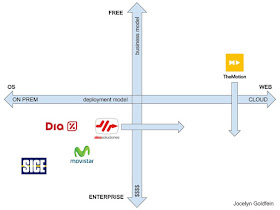In our daily work as developers, the most important aspect is how we tackle challenges and bring our visions to fruition. This focus on process rather than the product has become increasingly clear to me over time.
Currently, the following aspects of my work as a software developer are most important to me:
- The way we work as a team and support one another's growth as developers.
- Our ability to communicate and collaborate effectively.
- The value we create for our customers through our solutions.
- Our dedication to continually innovating and improving our processes, relationships, and learning.
It may seem counterintuitive, but in my experience, I've found that by focusing on the "how" of things - the process and the people involved - I'm able to be a part of creating strong, effective teams that produce great results and products.
- First, I evaluate whether the opportunity aligns with my personal mission and ethical values (See more at my Personal Mission).
- Second, evaluate "How" they work:
- Whether the focus is on resources and assets or people and skills.
- Whether the company's values are reflected in their hiring practices.
- How the company approaches uncertainty and risk in the product development process.
- Whether the focus is on outputs or outcomes.
- Whether the company is open to validation and learning, or if they seem to have all the answers already.
- Whether there is a genuine culture of collaboration within the company.
I'm trying to determine if the company's culture is 'green' or 'teal' in nature (see the following infographic), or if at least the company is open to evolving towards those models.
Related stuff:
- My personal mission
- cultura y xp nos funciona (Spanish)
- http://www.reinventingorganizations.com/ the book, and some videos (videos )
- Apprenticeship Patterns Guidance for the Aspiring Software Craftsman
- The Long Road Sandro Mancuso
- How great leaders inspire action
(Text updated 2022-12-20)








